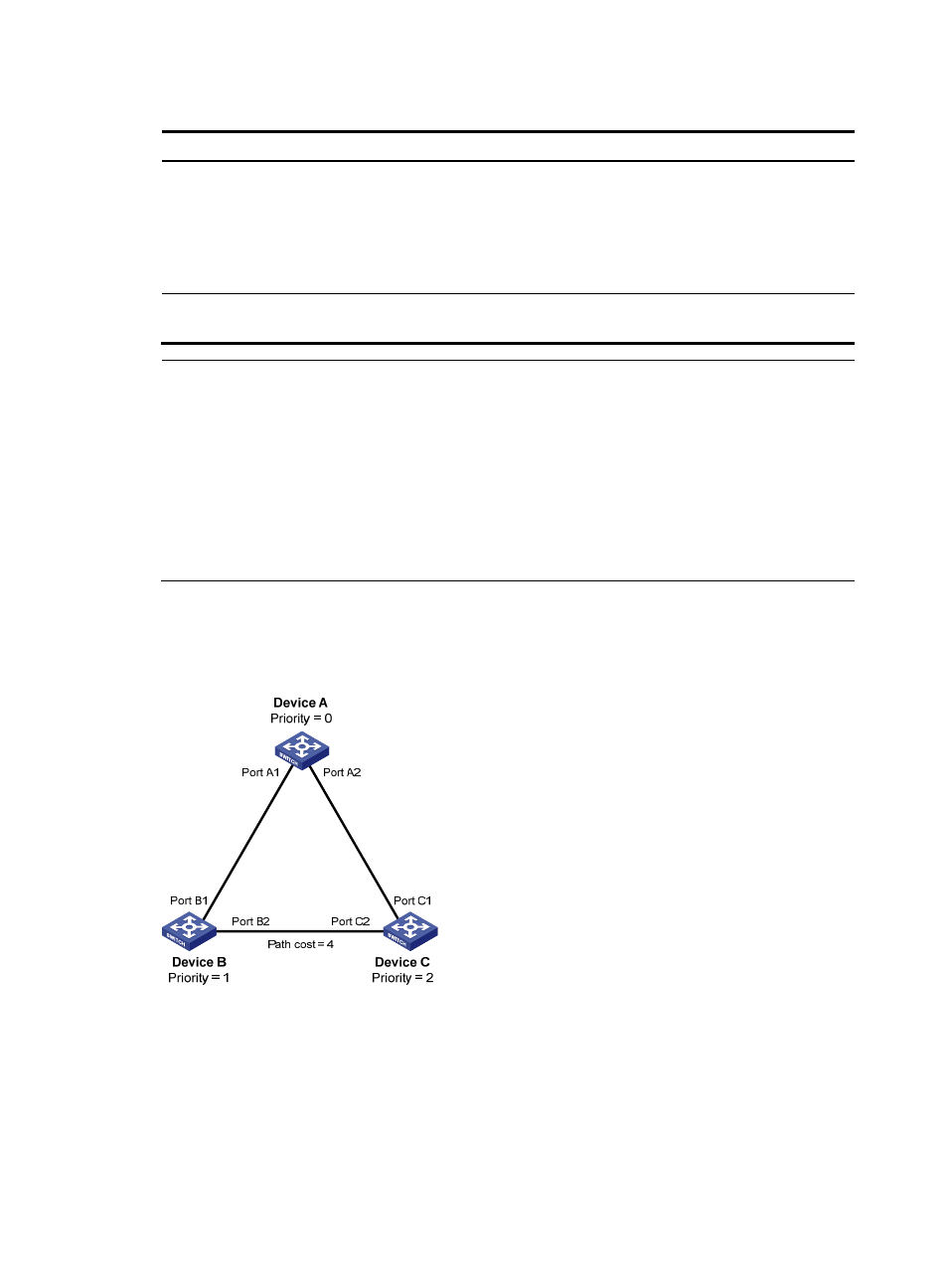H3C Technologies H3C S10500 Series Switches User Manual
Page 74

63
Table 10 Selection of the optimum configuration BPDU
Step
Actions
1
Upon receiving a configuration BPDU on a port, the device compares the priority of the received
configuration BPDU with that of the configuration BPDU generated by the port, and:
•
If the former priority is lower, the device discards the received configuration BPDU and keeps
the configuration BPDU the port generated.
•
If the former priority is higher, the device replaces the content of the configuration BPDU
generated by the port with the content of the received configuration BPDU.
2
The device compares the configuration BPDUs of all the ports and chooses the optimum
configuration BPDU.
NOTE:
The following are the principles of configuration BPDU comparison:
•
The configuration BPDU with the lowest root bridge ID has the highest priority.
•
If configuration BPDUs have the same root bridge ID, their root path costs are compared. For example,
the root path cost in a configuration BPDU plus the path cost of a receiving port is S. The configuration
BPDU with the smallest S value has the highest priority.
•
If all configuration BPDUs have the same ports value, their designated bridge IDs, designated port IDs,
and the IDs of the receiving ports are compared in sequence. The configuration BPDU that contains the
smallest ID wins.
A tree-shape topology forms when the root bridge, root ports, and designated ports are selected.
describes with an example how the STP algorithm works.
Figure 18 Network diagram for the STP algorithm
P
a
th
c
o
st
=
5
P
a
th
c
o
st
=
1
0
As shown in
, the priority values of Device A, Device B, and Device C are 0, 1, and 2, and the
path costs of links among the three devices are 5, 10, and 4 respectively.
4.
Initial state of each device